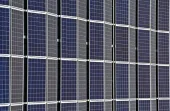
Philippines’ policy potholes leave analysts frustrated over its power potential
A big catch lurks behind the attraction and scares investors away.
Following the steps of its neighbouring countries, the Philippines is setting its eyes on shifting to renewable energy sources and slowly shedding its dependence on coal, oil, and gas for its energy needs. The country’s market, in theory, is a bright spot for investors along with Thailand and Indonesia, but its attractiveness is marred by policy loopholes that counter its big potential.
Recent project announcements attest to the Philippines’ investment appeal including the 92.5MW module shipment from Chinese manufacturer, JA Solar Holdings. This represents JA Solar's first entry into the Philippine renewables market and is representative of analysts’ views that Chinese solar manufacturers will increasingly turn to rapidly expanding Asian renewables markets in order to offset some of the overcapacity in their domestic market. Renewables developer, Conergy, also announced in October 2015 that it is developing over 200MW of solar capacity across the Philippines.
"We have previously noted in our analysis that the ongoing power supply issues in the Philippines will gradually improve over the coming years as a robust power project pipeline is commissioned. Although the project pipeline is dominated by coal, the pipeline for renewable energy is also strengthening, on the back of the strong regulatory environment in place to attract renewables developers into the market," says Georgina Hayden, senior energy & infrastructure analyst, BMI Research.
Tony Segadelli, managing director of consultancy firm, OWL Group, agrees that the government is very supportive of investments, particularly from the highest levels of government where it is recognised that lack of progress in the power sector can be an impediment to international investment in other sectors. EPIRA (“Electric Power Industry Reform Act (EPIRA) of 2001”) brings a high level of transparency to the power market, which is to be encouraged. “In 2015 there was a push to repeal EPIRA as it was perceived to be responsible for high power prices at times of low supply. Fortunately the government resisted this move and while there has been some ‘tinkering’ with the rules, they remain largely intact,” he adds.
The deregulated market offers some benefits to investors in terms of access to the market, although this is offset by the complexity of permitting and the large number of approvals required to be able to proceed with projects at a local level. The government has recently announced tightening of emissions standards for coal plants, which bring these in line with international standards, Segadelli says.
The government seems to be committed to expanding the domestic renewables industry and has implemented a number of policies to encourage investment. These include tax incentives, duty free imports of equipment, a feed-in tariff programme (FIT), net metering and utility quotas - amongst other regulations. Furthermore, Hayden says, the Philippines has some of the highest electricity tariffs in the southeast Asia region, which allow for attractive returns for prospective developers.
Emmanuel P. Bonoan, vice chairman and COO at KPMG R. G. Manabat & Co., says that because of strong economic fundamentals, the investment climate in the Philippines has significantly improved in the last few years. The economy, as measured by the Gross Domestic Product, grew by 6.1% in 2014 and 5.8% in 2015, one of the highest growth rates in the ASEAN region. The country has also consistently improved its rankings in key global competitiveness surveys. The Philippines gained five places in the World Economic Forum’s 2015-2016 Global Competitiveness Index to reach 47th place out of 140 countries. The Philippines also improved its ranking by six places in the Heritage Foundation’s 2016 Index of Economic Freedom, to reach 70th place out of 186 countries.
“A better investment climate can be achieved with improving government institutions, investment in critical infrastructure, relaxing foreign ownership restrictions, and rationalising tax laws,” he says.
Here’s the catch
These scenarios seem pretty decent and enticing for investors, but Roberto S. Verzola, executive director, Center for Renewable Electricity Strategies (CREST), thinks otherwise.
The Philippine Energy Plan’s 2012-2030 “business-as-usual” scenario expects peak demand to increase to 23,158 MW by 2030. To cover the peak demand plus the required reserve margin, a capacity of at least 25,788 MW must be ready by that year.
Flor Tarriela, Chariman of PNB and a FINEX Trustee adds that historically, demand has outpaced supply. There is currently a tight demand-supply balance. The Philippines is subdivided into the Luzon, Visayas and Mindanao power grids, each with a distinct power supply to support the regional demand. The Luzon and the Visayas grids are interconnected; any excess in one grid can be exported to cover any power deficiency in the other. The Mindanao grid however, remains isolated and stands alone.
“Power supply should be able to cover (i) peak demand and (ii) reserve requirements. Peak demand represents the highest power requirement registered during the peak hours in between 11 a.m. and 2 p.m. and typically at the highest during the summer months. Reserve requirements are stand-by power in the event of unexpected forced shutdown of key power plant facilities,” Tarriela says.
Bonoan also points out that the country has been targeting to shift to renewable energy but the shift is taking too long to happen. This is because capital outlay for fossil fuel plants, such as coal and diesel are relatively cheaper (on a per MW basis) than RE plants. Fuel costs have also decreased in the past few years, which makes thermal power plants more competitive. Conventional power plants are also needed to keep the balance in the grid, especially when RE comes in the form of intermittent wind, mini-hydro and solar sources. Another challenge is that incentives in the form of FIT remains limited due to the government establishing “targets” (which the industry has interpreted as “caps”) on the generation capacity that will be awarded FIT rates. RE projects that are in excess of the approved FIT capacity would have to be sold through the WESM, and thus subject to volatility in electricity market prices. Other challenges include the slow and lengthy process involving feasibility studies, bidding, permits, environmental clearance, and approvals for projects located in indigenous peoples’ areas, among others.
The big hurdle
Segadelli comments that red tape is a concern for all industry participants and is recognised as a source of frustration to developers. Unfortunately, due to the regulatory and governance framework, there are multiple layers of vested interests, and the public accepts corruption as almost a foregone conclusion. “Breaking this cycle is extremely difficult, particularly where any challenge to the system can be tied up in the courts for years. A strong government may be able to develop central coordination, but this will continue to be problematic. For a consulting firm the biggest challenge will be the slowdown in the market as developers and investors adopt a ‘wait and see’ strategy until the new government policy is developed. It is likely that it will take several months before there is clarity on this,” he adds.
Verzola says that with 1,767MW of capacity additions already committed, the plan still requires new additions of 11,400 MW over the planning period, to bring the total capacity by 2030 to 27,714MW. This is 1,926MW above the necessary supply of 25,788MW, presumably to cover for the retirement of aging power plants.
“If we scaled down the demand using energy efficiency measures and covered the scaled-down demand with renewables only, then peak demand will have risen more slowly than usual and the renewables-only additions will have sufficed until 2030 to cover the peak demand plus reserve requirements with 670MW to spare, based purely on existing government plans in 2012,” he asserts.
“Sadly,” he adds, “the Philippine government went instead on a construction binge of 23 coal plants that is scheduled to go on until at least 2020, squandering a golden opportunity for the country to show the world how to make an early energy transition to renewable electricity.”
Tarriela also explains that demand-supply outlooks are vital as generally, one of the main concerns of investors and banks financing power projects is the market risk that there will be an abundant supply of electricity such that a power plant will not be able to get guaranteed buyers of electricity produced whereby the power plant might have to resort to sell at the open market at a price below break-even.
“More power plants are needed. Banking sector support to finance power projects is critical to ensure that overall power requirements are addressed. Banks, however, should be mindful to proceed with caution as any slowdown in market demand could lead to an oversupply. Power plants to be financed need to provide an acceptable business plan on addressing market risks. Power costs remain among the highest in Asia. If power cost can be further reduced, we can expect the Philippines to be even more attractive for business,” Tarriela comments.
Fernando Vidaurri from Dezan Shira & Associates, concurs with Verzola’s view, saying that one of the reasons renewable energies have been seeing slow growth is that investment in this industry is not seen as offering the same investment returns as fossil fuels.
“In addition to costs, investment has been affected by the slow approval process. For this reason, solar industry officials have started putting more pressure on the government to increase investment incentives and process project permits faster,” Vidaurri says.
What The Philippines should focus on
Tarriela comments that when considering the reduction in energy to be sourced from hydropower plants, especially during the summer, as well as from wind and solar power, which are considered as intermittent sources of energy, available power from the Luzon Grid may be sufficient to cover peak demand but will not be able to account for reserve power.
Segadelli also comments that the current allocations for solar and wind under the FIT have now been exhausted, and the government has indicated an extension of these programs. However until the details of the next policy are released, particular on solar and wind, investment is likely to slow for a few months.
“The country already has a healthy hydro industry, dating back almost 100 years, and a large number of plants are under development. Biomass is also showing growth potential, particularly where smaller units can be developed in agricultural areas to support the local power requirements,” he says.
The question presumes it is taking too long, although it’s not clear what ‘too long’ actually means. If the solar and wind growth is anything to go by, the growth has been explosive, rising from nothing to close to 1 GW in solar and wind in under 3 years (by comparison, peak power demand in 2014 was 11.8 GW).
“It is important to recognize that the Philippines is not a wealthy country, and power development has been focused on least-cost solutions, which historically in SE Asia have been coal-based. Renewable technologies are now becoming cost competitive, and with the government support available, are being rapidly adopted,” Segadelli concludes.



















 Advertise
Advertise







